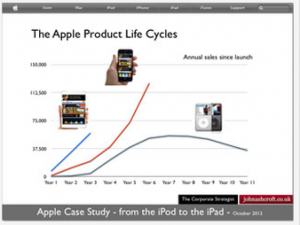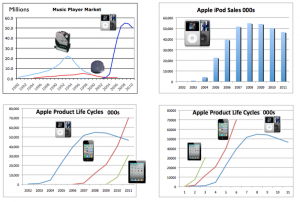
Adidas and Nike have been in competition since the beginning. Both companies sell similar products, including shoes, clothing, athletic equipment and many more things in the sporting world. As a result they are selling to the same target market, and customers have to make the choice based on what they are purchasing. They both are very popular and have a huge customer base. They are constantly competing every year for sales and are always trying to top each other. They each are so well managed and have such developed business techniques that it might seem hard to improve more than they already are. Nike might be more popular in America but Adidas has a strong grip in Europe, and has rarely shown signs of weakness.
However recently Adidas has been struggling to keep pace with the retail powerhouse that is Nike. Third quarter sales for Adidas did not meet projections, and this set off alarms for management. Adidas golf alone has gone down 29% from this time last year, which is over 180 million dollars. To combat this Adidas has vowed to drastically increase inventory management. The company is on a mission to keep surplus stock down to combat holding costs. Analysts claim that if they can cut surpluses it will turn company earnings back towards projections.
Adidas is especially worried about their golfing line because of how expensive it is and how quickly new products are developed. If anyone has ever shopped for golf clubs you will know how crazy expensive they can be. We are talking about a thousand dollars for a good set of clubs. Customers constantly want the newest and most high tech clubs available. So if they are overstocked on a certain set of golf clubs and a new and improved set is released, it now becomes much harder to sell the surplus and they could be stuck losing value the longer they hold them.
They even decided to “not chase sales” for the second half of 2014 in attempt to focus more exclusively on their inventory management. They are trying to reduce inventory to further increase profit. Better inventory management gives Adidas the flexibility to react quickly to market sentiment, and adjust to the popularity of certain items over others. If they have less quantity of a unpopular product in their inventory then it minimizes potential loss on unsold goods.
Adidas is confident that increased inventory management will grow sales and margins in 2015, especially in their golfing department, returning them to profitable levels.
Do you think Adidas made a smart decision to step away from emphasis on sales to focus more on inventory management?
Will better inventory management allow them to surpass Nike?
How important do you think inventory management is for companies like Adidas and Nike?

Sources:
http://seekingalpha.com/article/2660085-adidas-addyy-ceo-herbert-hainer-on-q3-2014-results-earnings-call-transcript
http://blogs.wsj.com/source/2012/11/08/adidas-is-fast-catching-nike-in-china/
http://www.wallstreetdaily.com/2014/11/11/adidas-nike/


